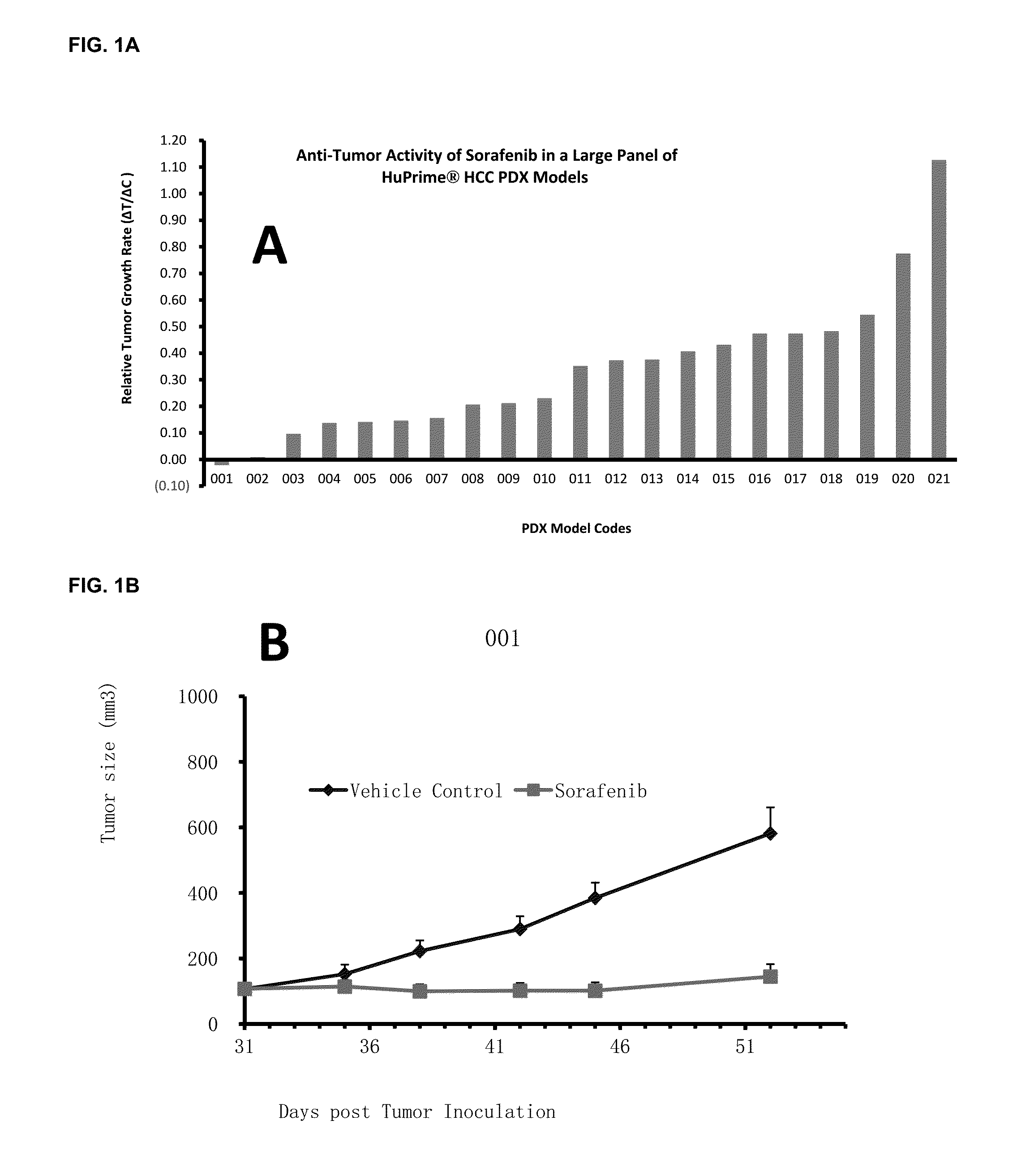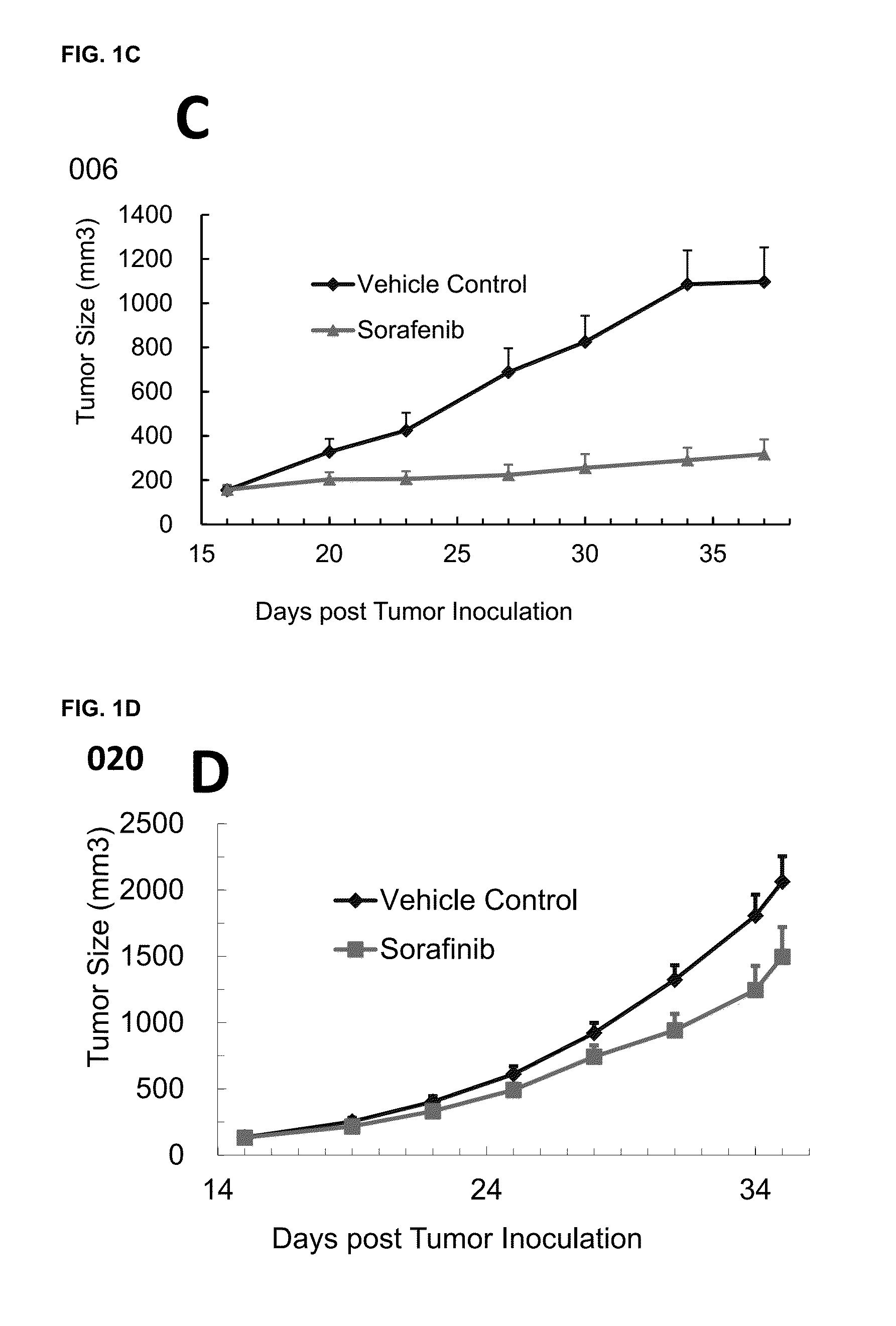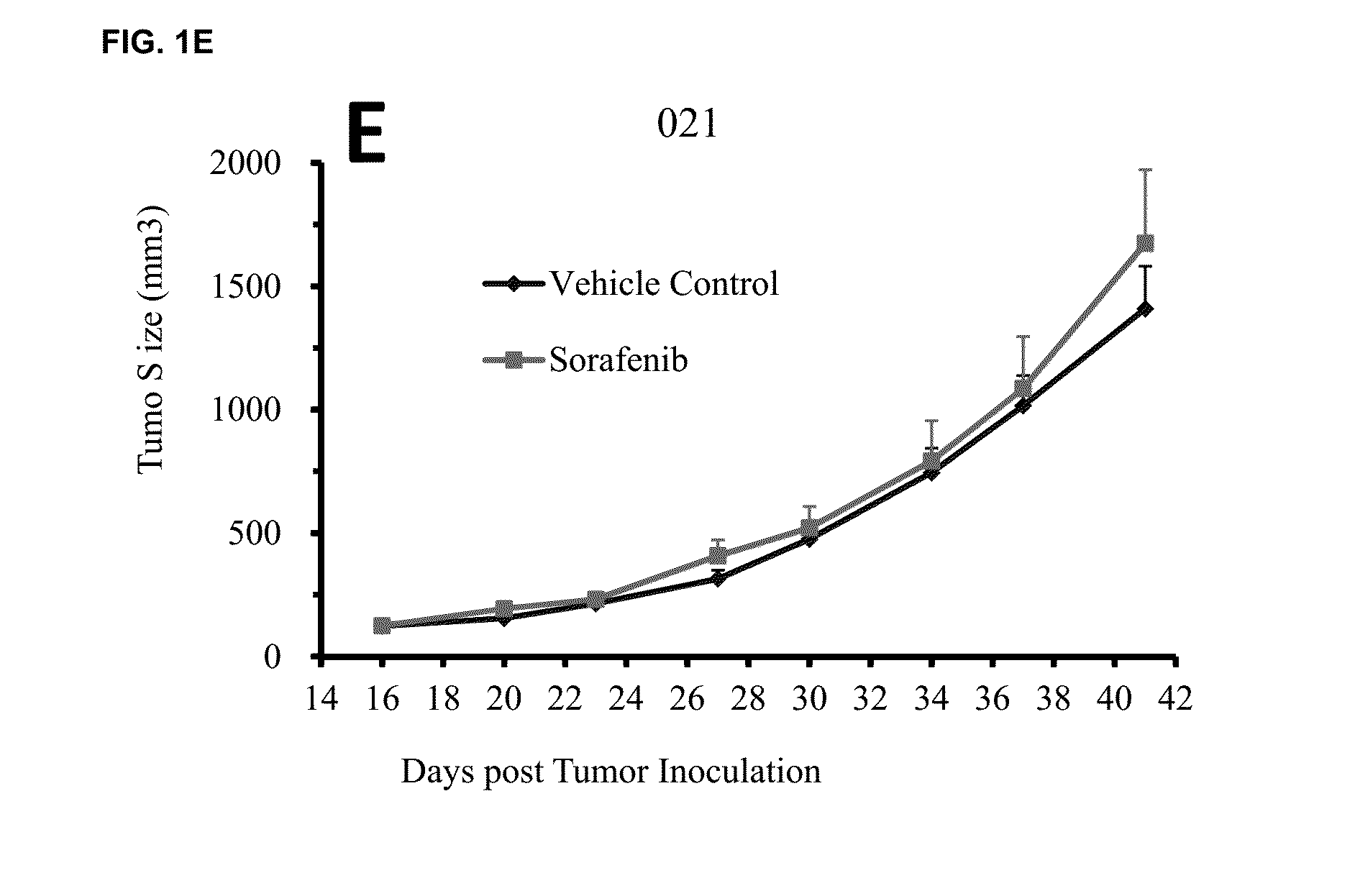Gene expression signatures predictive of subject response to a multi-kinase inhibitor and methods of using the same
a multi-kinase inhibitor and gene expression signature technology, applied in the field of subjects' treatment, can solve the problems of few effective treatment options, many hcc patients do not respond well to sorafenib, and sorafenib also has unfavorable side effects
- Summary
- Abstract
- Description
- Claims
- Application Information
AI Technical Summary
Benefits of technology
Problems solved by technology
Method used
Image
Examples
example 1
Significant Numbers of HCC HuPrime® Models are Sensitive or Partially Sensitive to Sorafenib
[0108]Experimental models capturing human HCC oncogenic mechanisms are critical to evaluate HCC treatments and discover biomarkers predictive of patient response. Patient derived xenograft (PDX) models mirror patients' histopathological and genetic profiles (2-7). We have recently established a large collection of HCC-PDX models (named as HCC-HuPrime®, or patient avatars) by engrafting the treatment naïve patient tumor tissue fragments into immunocompromised mice. We tested Sorafenib on a randomized cohort of the HCC-HuPrime in clinical trial-like study. The study led to identification of “responders and non-responders”. We next expression-profiled these models using microarray GeneChip technology. By applying statistic analysis, we have identified a specific molecular signature that are associated with the response, or called HuSignature®. The gene expression signature, consist of only a few...
example 2
HCC-PDX can be Classified into Three Major Categories Per Global Gene Expression Profiling
[0110]HCC is a disease of diverse types. Global gene expression profiling of patient tumor samples have revealed that HCC can be classified into three major subtypes. Recently, transcriptome analysis has classified HCC into three major categories with distinct clinical parameters as well as cellular differentiation1. They are S1 (stem-like group with activation of the WNT pathway and TGF-β), S2 (activation of MYC and AKT), and S3 (hepatocyte differentiation). HCC-PDXs) are believed to be predictive experimental models by maintaining the original patients' histopathological and genetic profiles2,3. This present study attempted to test this hypothesis by demonstrating whether HCC-avatar have similar genomic profiles as the patient tumors in classification and biological properties.
[0111]First, all described HCC-PDXs were used in avatar trial were profiled for global gene expression as previously ...
example 3
Identification of HCC Gene Expression Signature Predictive of Response to Sorafenib
[0114]A statistical method based on linear regression was used to identify predictive biomarker (i.e., gene signature) using global gene expression levels and the measured Sorafenib treatment effect on HCC-PDX as by % ΔT / ΔC as described above. By pre-set statistic criteria including p-value4 folds, no outlier in the linear regression analysis, we can derive a signature consisting of 8 genes that demonstrated good predictivity (e.g., FIG. 1, and Table 3). It is worth noting that a signature with more genes will create better relevance and smaller p-value, while have less practical values in the clinical application. The stringency of the preset criteria will determine the number of signature genes.
[0115]Although these signature genes are identified purely by statistical analysis and no biological knowledge was used to do any filtration before and after the analysis, these signature genes may be used to...
PUM
| Property | Measurement | Unit |
|---|---|---|
| Protein activity | aaaaa | aaaaa |
| Level | aaaaa | aaaaa |
Abstract
Description
Claims
Application Information
 Login to View More
Login to View More - R&D
- Intellectual Property
- Life Sciences
- Materials
- Tech Scout
- Unparalleled Data Quality
- Higher Quality Content
- 60% Fewer Hallucinations
Browse by: Latest US Patents, China's latest patents, Technical Efficacy Thesaurus, Application Domain, Technology Topic, Popular Technical Reports.
© 2025 PatSnap. All rights reserved.Legal|Privacy policy|Modern Slavery Act Transparency Statement|Sitemap|About US| Contact US: help@patsnap.com



